Mariella Hunt's Blog, page 3
September 13, 2024
Beatrix Potter: Author and Naturalist, Part I
Beatrix Potter. If you do not recognize her name, you’ve probably heard the name of her most famous character, Peter Rabbit.
He is one of the first protagonists to capture young readers’ imaginations. I was one of them, sitting on Grandma’s lap as she read the book aloud to me. I delighted in hearing about Peter’s antics in the garden with cranky Mr. McGregor. That book is a relic to me; I’ve held on to that copy, for it is so colored with personal memories. The illustrations in The Tale of Peter Rabbit were drawn by Beatrix herself.
She was a prolific artist. As a storyteller, she possessed a bright and vivid imagination. Three years ago, I wrote a blog post sharing facts about this fascinating woman. Like most authors, she’s become obscured by the stories she told and characters she created.
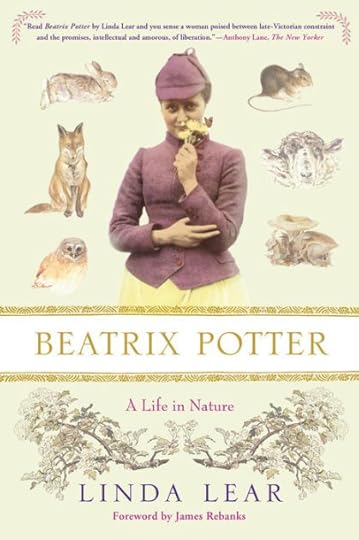
Having read further about the life lived by this headstrong woman, I was delighted to discover that her passion was not limited to art for art’s sake. Linda Lear’s book Beatrix Potter: A Life in Nature has helped me to see her in a new light. I admire Beatrix even more than I did before.
Helen Beatrix Potter was born to wealthy parents Rupert and Helen on July 28, 1866 at West Brompton, London, England. Her family on both sides were practicing Unitarians. This meant that her social life was limited, in spite of her parents’ comfortable lifestyle and position in Society. This led to an absence of close friendships, driving her to form bonds with animals in the garden.
She and her younger brother, Bertram, amassed an impressive collection of critters inside of the house itself, from butterflies to bats, many of which would serve as inspiration for her stories. As a child, Beatrix also found diversion in her father’s collection of books. It fed her young imagination such that, later in life, she was able to write and paint scenes that engrossed audiences of all ages.
When it became obvious to Rupert Potter that his daughter was gifted in the arts, he was incredibly supportive. Himself also a devotee of the arts, he was happy to hire tutors to refine her talent. Beatrix’s early years saw her working with at least three art tutors. While she benefited from the lessons, she was a free spirit. Diary entries written at the time reveal that she did not like being told how to draw her pictures. Once finished with her third and final instructor, she was glad to explore her own style.
By that time, she was skilled enough to go into the world and sketch to her heart’s delight, developing a palette of her own. She explored the gardens of her family’s various estates, as well as the forests surrounding them. This is where her interest in drawing nature began: the common flower in the back-yard.
Soon her interests shifted from depicting plants to learning about them. Beatrix Potter wanted to know what the plant was called, what it was used for, and where to find it.
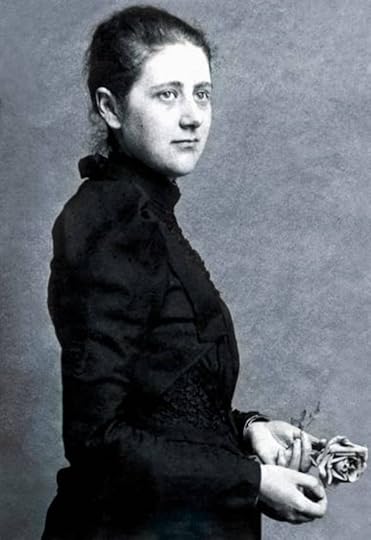
Thus began the scientific journey of the future author of Peter Rabbit. Her childhood saw her as a lonely girl seeking comfort in art. By the time she became a young lady of fifteen, Beatrix had developed an interest in matters not proper for females. She gathered fungi in the forest, scouring her father’s books in the hopes of learning their Latin names. She placed them under Bertram’s microscope, drawing them to the minute detail. Unfortunately, few of these illustrations survive.
Any serious interest in the sciences would not do for a well-bred lady. Regardless, Beatrix would not renounce her passion. She would stop at nothing in her attempts to break free from the restraints of society. She did so in a quest for answers to her inquiries: What is this plant? What does it do? How does it reproduce?
Finding insufficient information about fungi in her father’s books, she began what would be a long journey into a male-dominated field. Imagine such determination at the young age of fifteen!
Beatrix went to various universities and conservatories on her own. She went in search of professors who could tell her about the plants that had gripped her curiosity. It was the beginning of a long, frustrating struggle against Society. She was constantly told by her mother that she was doing severe damage to her name and that of the family.
As we will see in part two of this essay, which I will publish next week, Beatrix proved to be a fighter, insistent in acquiring the information she desired.
The Tale of Peter Rabbit had not been born yet when Beatrix walked to one of the exclusive scientists’ hubs, Kew Gardens. I picture her holding a parasol, sketchbook gripped under her arm. She was likely wearing a pair of gloves—for what lady would be seen without them? Beatrix was always sensibly stylish. Her head, I imagine, was held up high as she braced herself to knock at each and every door until one of them opened.
Beatrix wanted to know these things—needed to know—and it is a good thing that she sought this knowledge persistently. She would one day become a pioneer in the natural sciences, a woman to be admired for many reasons other than her storytelling.
If you haven’t been convinced yet to read The Tale of Peter Rabbit, I suggest you do so. It is more than just a children’s book. You learn about an author through the stories they tell.
Was Peter Rabbit one of the first books you read as a child? Did you know about Beatrix Potter’s unusual interest in science? If you could ask her one question, what would it be?
Feel free to comment and answer these questions, or make any remarks that you desire!
September 12, 2024
I Finally Saw Little Women
Recently I (finally) saw the movie Little Women (2019). I know; when it comes to films, I’m horribly out of the loop. Books are more of my realm; I find my escapism between pages of novels, and I’ve always been that way. Many people have been bemused by this fact and struggled to understand it, but I digress.
While it isn’t completely true to the novel, and there are certainly flaws in some elements of the story, I found it a delight to watch. The music, for one, was excellently arranged. The dancing, and every scene with Laurie in it, and the cinematography were fantastic to me. Mind, I do not watch many movies, so I do not consider myself a very adequate movie critic.
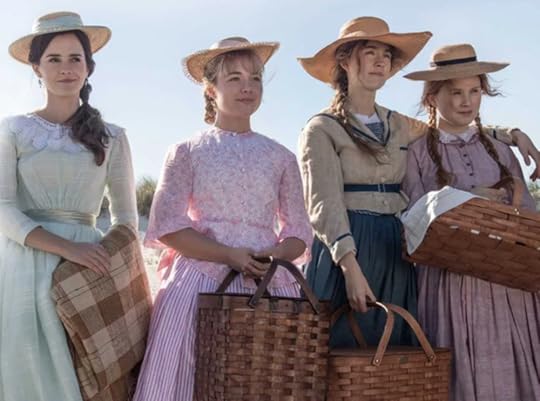
I will say that, aside from Titanic and Theoden’s last scene in LOTR3, this is the only film that has managed to make me cry honest-to-goodness tears. The concept of four sisters enduring harsh times together—in the past and in the future—is simple enough that it creeps into the most basic and tender corners of the human soul.
What I really want to talk about, though, is the scene where Amy burns Jo’s manuscript. It’s a scene in the book, as well, but seeing it played out so excellently by these actresses, seeing Jo’s anguish when she realizes that her life’s work is lost to her, is heartbreaking. As a writer, Google Docs is my back-up plan, and tentative at best; there is always the chance that something might go haywire and my work will vanish for eternity.
Amy in the film is portrayed as a vain and jealous thing. When she admits that Jo cares nothing for her dresses, so she burned the manuscript instead, the only thing in the world that she cares about, that was a punch that I felt in my own gut. It is romantic to think about those days when novels and love letters were written with pen and ink, but I’m grateful on a practical level that flashdrives and backups exist.
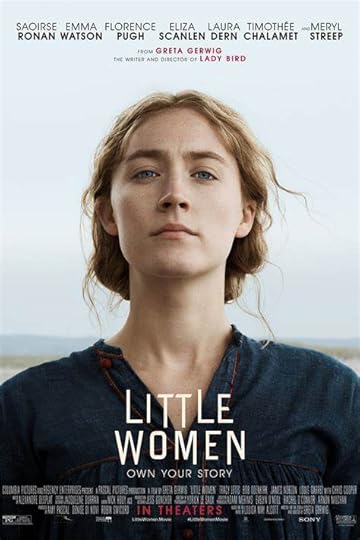
I must also mention the scene where Jo does forgive Amy, but it only happens after Amy nearly loses her life in the frigid water while chasing after Jo and Laurie while they’re ice skating. To a writer who is truly devoted to their work, erasing that work from existence is about the lowest blow that you can manage. It is low, and it hurts, but since these two sisters do love one another, forgiveness is possible.
You can forgive, but of course it is difficult to forget. If I recall correctly, Jo is dejected and reluctant to take up writing again for a long time. She does not cave until Beth makes her promise to continue telling her stories, no matter what. If you’ve read the book or watched the movie, you’ll understand why Beth’s words held such significance, and why they compelled Jo to write again.
I wish I had seen more of Emma Watson, but I understand that with four sisters and four stories, there had to be a strategic way to write out the script. I chuckled during that scene in the attic when Emma is speaking like an Englishwoman, ‘speaking like herself,’ just for a few moments.
And of course, I think that Laurie is one of the best characters in the film; he dances like a dream, and his emotions are palpable as he finds himself confused between past and present. Also, I might have a crush on the poor guy.
I wish I’d seen the movie sooner, but I’m glad that I finally did. What are your opinions on the film? Which sister did you sympathize with most? What scenes do you believe will stick with you for the rest of your life?
September 10, 2024
Guest Post: Author K.R. Richards
Hello everyone. I’m K. R. Richards. I write historical romance, historical paranormal romance, historical romance adventure, and contemporary paranormal romance. I would like to thank Mariella for inviting me to her blog!
I have been writing since I was a teen, but didn’t publish until 2012. I have nine ebooks on Amazon and five stories on Kindle Vella. I have two “Book 3’s” of book series in the works that I need to finish and release, and two of my completed Vellas that I plan to get ready to publish in book form.
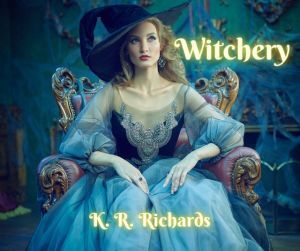
My first book was Lord of the Abbey, and four more books and a novella followed that to make up the Lords of Avalon (LOA) series. That series needs to be re-edited and someday I’ll get around to doing that. Life, other obligations, and day jobs have proven to be obstacles to that endeavor thus far. But I garnered a loyal fan base with that series and have fans who reread my books often. So, I decided long ago that because it is still being read and enjoyed and all books have over a four-star rating, that I will simply re-edit them for grammar and punctuation and leave them as they were originally written. That series has a lot of sex scenes in it, (Fifty Shades was the rage back then. Lol) But with each book, the sex becomes less and more tasteful. By book four of the LOA series, I was feeling more comfortable with writing. I feel it was from that point that my books really improved. I took some classes and learned over the past years how to self-edit. I have four very loyal Beta readers who let me know when something’s working and when it’s not.
The LOA series serves as the backbone for two other series, the Quest for the Shroud series, which contains some characters from the LOA series, and my new Lords of Avalon: Next Generation series, which I started on Vella and plan to publish.
The LOA Next Generation series focuses on the children of the heroes and heroines of the Lords of Avalon series. I am having a blast writing this new series. I get to figure out what the children of my old characters should look like and what traits (good and bad) they will have. Then I get to give them their own personalities. I get to cameo some of my old heroes and heroines in their middle-aged years, and as parents. That’s a lot of fun.
The LOA and Quest series I consider to be historical romance adventure (with a bit of paranormal thrown in from time to time) as is my Vella-soon-to-be book, Finding Avalon. Finding Happiness has less adventure, there is still some, but I consider it to be more of an emotional romance. The Next Generation stories will each be stand-alone books, however, I may set up a romance or two to be continued in an upcoming story here and there. I plan for the Next Generation series of novels to be published as merely “A Lords of Avalon: Next Generation Novel”, whereas the books in each of the LOA and Quest series are related with the same search or quest ongoing, each with one or two HEA in the romance area per book.
My contemporary paranormal series, The Decker Brothers Trilogy, is also a favorite of fans. It centers around three brothers of Irish lineage, the Flynns of the ancient O’Flynns. The brothers and three women are brought together due to a chance meeting of the hero and heroine in Decker’s Fate, Book One, which brings in an old Irish demon connected to a forgotten O’Flynn family curse. The Deckers meet Irish relatives and learn more about the curse. The brothers and the ladies must learn magic from the Irish O’Flynns in order to protect themselves from the demon. And they must find a way to break the curse. Think Friends theme with magic, action, and demons. Books One and Two are out. Book Three is not completely written yet. Nor is Book Three of The Quest for the Shroud series.
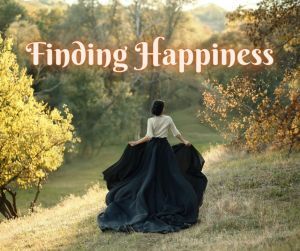
There was not much time for writing during the four years I was a caregiver for my mother before she passed. I started writing Vellas in 2021, as I felt I could manage writing short episodes, and it was something I could do while being a caregiver. I’m so glad I did because writing Vellas has definitely improved my writing skills. I have made many friends in the wonderful Vella community, have widely expanded the genres I read, and in the Vella-verse I have found some fabulous authors whose work I love to read, like Mariella’s.
Now I’m writing Vellas and slowly working on two Book 3’s of the Decker & Quest series. I plan to soon focus on getting my first Vella, The Guardian of Elphinstone published in book form and do the same with my first LOA Next Generation story, Finding Avalon. I plan to also publish Season One and Two of Witchery into book form, but I’ll save that project for next year, so they are ready to be released in Autumn for Halloween. Witchery is a lot of fun to write. I still have a couple of seasons planned for it. Think Downton Abbey but with Scottish Witches. Lots of magic, mayhem, drama, and romance, Victorian style.
Recently, I started back to work with a second part-time job. My writing time has considerably lessened, so I’m only working on two Vellas at a time now. I was about to start the third Season of Witchery when the Vellys contest came along.
I had to use a brand-new story, so I had about fourteen episodes of a project written, The Athena Society Chronicles, that I worked on here and there. That became my Velly submission. The Athena Society is born from a Ladies Literary Society, the members of which help a Duke and two of his friends search for proof that one of the Society’s members, the Duke’s sister was murdered by her husband.
There are a lot of characters in my books and Vellas. I like it that way. Some people may not. But they all have a purpose. I’ve learned how to use my cast of characters without confusing the reader. (I hope) I confess the LOA series has a problem with that. You will also find there are sometimes more than one romance within a book. Sometimes it’s setting up the romances for another book, sometimes there is just more than one romance going on. But it all works with the plot.
I love history, so you will find some history in most of my books. Myth and Legend also weave through most of my stories. And the paranormal. There is more in some books than others and so far, there is no paranormal whatsoever in Finding Happiness.
The Lords of Avalon series begins in Glastonbury, England in the 1830’s. Glastonbury is steeped in myth and legend, and the place has always fascinated me. The whole premise of the series is the hero, heroine, and friends search for some of the lost treasures from Glastonbury Abbey that disappeared during the Dissolution of the Abbeys during Henry VIII’s reign. The locations change throughout the series, from Glastonbury, to Devon, to Cornwall and back to Glastonbury. Myth and legend tie in with the different locations used in this series.
The Quest for the Shroud series is based on the premise that when the Knights Templar were arrested some of them escaped and took much of the Templar treasures, including the shroud of Jesus, to Scotland where they were welcomed by Robert the Bruce who was fighting the war for Scottish Independence. In 1835, the Avalon Society (some members from the LOA series) must search for the shroud, as an unknown enemy is murdering shroud scholars. The Shroud Guardians in the series are my invention, but much of the myth, legend, and history about the Templars, the Shroud, and their connection to Robert the Bruce come from the pages of history books.
In Finding Avalon, my first LOA Next Generation Vella, my characters are searching for the Holy Grail in Glastonbury, where Arthurian and Grail myths and legends abound.
Finding Happiness is about second chances for both the hero and heroine. There is some adventure, but mostly it’s about the hero and heroine and their journeys of change and finding happiness together.
The Guardian of Elphinstone is set in Cornwall. I decided this area full of ancient monuments was the perfect place for a portal between our world and Elphame to exist. My hero in this story is the Guardian and protector of this ancient Fae site. There’s murder, romance, magic and cheeky fairies in this one.
I want to thank Mariella again for giving me the opportunity to tell you about myself and my stories.

K. R. Richards likes to garden, loves history, metaphysical studies, and is a collector of crystals, minerals, and gemstones.
She is a transplant from Arizona to Mississippi. She is mother to two amazing sons, has a beautiful daughter-in-law, and two wonderful grandchildren. She is owned by a mischievous orange tuxedo cat and an active Border Collie mix, both of whom keep her on her toes.
Find her on Facebook, Instagram, Goodreads, and this is her Amazon author page!
September 8, 2024
Review: A Tempest of Tea
I do not typically grab books about vampires. Vampire burnout after the Twilight craze weighed heavily on me, and I was not impressed by the vampire books that I tried after that series finished.
For several years, I was averse to this category of fiction. It seemed to me that finding a vampire book that was unique, one that didn’t lean too heavily on cliches, was no longer possible.
Mind, I’m not judging people who write vampire books and like to read them. We all have different tastes; we all have favorite mythical creatures. My favorite creatures are Mermaids, as you could probably guess (I am writing a series featuring them). This is my opinion on vampire books that become wildly popular. I’m positive there are gems out there which do not get the same level of promotion.
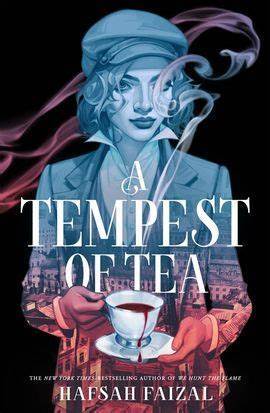
When I saw the book cover for A Tempest of Tea, I would never have guessed there were vampires in the story. The word tea is what convinced me to give this novel a try. Since it had been popping up on Bookstagram so much, I was tentative. There was always a chance it’d be one more book of vampire cliches.
I was surprised when I began to read.
A Tempest of Tea follows several viewpoints (which is awesome, since multi-POV stories show us a tale from different angles). Its focus is heaviest on the character of Arthie. Her story is heartbreaking, though I won’t speak much about it lest I spoil the ending (which I believed was a perfect way to wrap up this first installment).
She owns an illegal ‘blood-house’ called Spindrift. Using the appearance of a simple tea shop, it caters to vampires. They go in secret to mingle and to drink cups of (consensually donated) blood. This must all be done in secret, because the society they live in does not understand vampires or half-vampires; they are shunned and feared. There is reason behind such fear, too: a hungry vampire is something to be terrified of.
Spindrift is a solution to that problem; it provides vampires with a place get the nourishment that they need without having to become violent or kill. However, humans always fear what is different, shying away from what they don’t understand. When Arthie receives a warning from “the Ram,” the mysterious king of the city, stating that Spindrift will be shut down, she refuses to defer without a fight.
Arthie deals in secrets and blackmail. She is determined to save her blood-house, regardless of the cost. Having been roughened by the cold and lonely childhood she lived, there is nothing she’s unwilling to do, if it’ll save her business and the people she loves.
As a leading character, Arthie is powerful. We find ourselves rooting for her the entire time. There is also the POV of Jin, her “chosen brother,” who helps her to run the blood-house and keep business smooth.
My favorite POV, though, is that of Lady Felicity “Flick” Linden. She’s a wealthy young lady who wants for nothing but the love of her mother, who pulled away emotionally with no explanation, leaving her daughter to feel very alone. In her mother’s absence, Flick found distraction and purpose in becoming a “professional forger.”
All was going smoothly until Flick was caught and arrested. Not even Flick’s arrest could bring her mother to care; Lady Linden didn’t even visit the prison to see if her daughter was unharmed.
Felicity has no choice but to accept that her mother does not care for her. She decides to choose her own path, becoming the newest member of the Casimir family (Arthie and Jin chose it as their new surname). Though Flick does not adopt the name Casimir herself, she is a part of their group by the end of the novel.
Two romances unfold throughout the book. Both are delightfully slow-burn, because the characters are more focused on their challenges and on saving their own skins. However, we are not denied sweet moments and gentle touches.
Now I understand why A Tempest of Tea has been so popular on Bookstagram. It’s beautifully written with prose so colorful that I scribbled quotes from it into my reading journal.
This book is more than a pretty cover with a compelling title. It’s a new take on the myth of the vampire, and it will make you want to be a part of that world, chaotic as everything might be by the final chapter.
A Tempest of Tea is about more than vampires. It’s about family, forgiveness, betrayal, and believing in oneself no matter what. I recommend it to anyone who loves fantasy literature and slow-burn romance.
September 3, 2024
Review: A Match for a Bookish Bride
I did not read as many books in the month of August as I could have, distracted as I was by my new fixation with learning the guitar. (I reckon you’ll be hearing a lot about my musical ventures as I make a point to update my blog more often.)
One of the books I did get in was a prequel to the Ella Pointe series by Tess Thompson. The prequel is called The Making of a Matchmaker; it was short enough that I could finish it in an hour, and it set the stage cleanly for what sounded like a promising a series I would enjoy following.
My first read for September is A Match for a Bookish Bride, which is the first proper novel in the Ella Pointe series. It takes place on Whale Island, a seaside town described so beautifully that it reminded me, many times, of Avonlea in Anne of Green Gables. The characters had an echo of L.M. Montgomery as well, varied and solid as they were in their virtues and flaws.
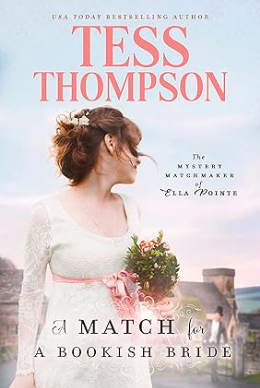
The series follows the wealthy Tutheridge family. At the start of the series, it consists of Mrs. Tutheridge and her four children, Benedict, Hudson, Briggs and Ella. There is no Mr. Tutheridge in the picture because he has been murdered, and the plot arc of the series seems to be a whodunnit.
Mr. Tutheridge was a cruel man who used people, kept mistresses, beat his sons, and mocked his daughter. His misdeeds extended to the people living in town as well; the wealthiest man in town has more power than a lowly teacher or fisherman. As a result no one is truly sad that he was shot. However, justice must prevail, even if his family is better off without him.
On thing is for certain: When everyone in town is a suspect, we have an intriguing series.
The plot for book one, A Match for a Bookish Bride, follows Benedict Tutheridge. He is the son who inherited the family business and fortune. Benedict is a clever man, but he has an unfortunate problem with reading. Since he was a schoolboy, words and letters swam on the page before him, meaning that he received consistent low grades. Each time, he was punished mercilessly by his father for shaming the Tutheridge name.
Now Benedict has inherited the brunt of the work, in spite of not being the oldest; it comes off as a cruel post-mortem joke arranged by the father whose dark spirit will always haunt him.
His mother, Mrs. Tutheridge, knows that Benedict is capable of managing the business, as well as so much more. He only needs the right assistant–a secretary to do the reading and writing portion, so that he can focus on the broader decisions.
So she begins a search for someone to fill in the position of secretary. However, she has more in mind than secretary. All of her children have lived their lives not knowing love; now that her husband is no longer alive to make them miserable, Mrs. Tutheridge has hired a matchmaker, in the hopes that there will be four weddings–four happily-ever-afters.
Benedict is not informed that the secretary his mother hired is a woman. He is told that the newcomer is called A.M. Young, so it never crosses his mind. He’s flabbergasted when he walks into the library to meet his new secretary, only to find a beautiful, shy young lady with red hair and eagerness to take on the secretarial role.
In my opinion, it’s love at first sight, but–stubborn as a man can be–Benedict fights his attraction to Amelia until he is no longer able to. His father’s cruel words left marks in his soul and on his self-esteem. Surely a woman as remarkable as her could never love him?
For a Christian romance, I enjoyed this one in particular because, though it had no inappropriate scenes, there was mention of the physical aspect of falling in love. I believe that physical attraction is mistakenly omitted from a lot of Christian romance. When a person truly falls in love, it’s all-encompassing; they want more than a person’s company, but to be with the person in the most sacred of contexts, in marriage. Thompson presents this aspect of love tastefully but realistically.
This is a quick read for a sleepy day, perfect with a cup of tea as autumn begins her approach. You will find yourself longing to live on Whale Island with its beautiful scenery and quirky characters. As a fan of happy endings, I was very glad that this book included one.
I can’t want to find out which of the siblings will be next in finding their one true love.
August 30, 2024
Review: A Thousand Heartbeats
“Love has a sound. … It sounds like a thousand heartbeats happening at the same time. … The thing is, some of us have been taught to listen for it, so when it comes, it’s all too easy to hear over the noise. For others, there are too many other sounds drowning it out. … But when it finally breaks through, it’s a symphony.”
from A Thousand Heartbeats
The Selection series by Kiera Cass was a treat for me to read when I was younger and developing a taste for literature. Not only were the dresses on the book covers breathtaking, but I enjoyed the story. It was lighthearted, bright, and magical—three traits that I love in any book I am reading.
After finishing The Selection trilogy, I hadn’t touched another book by her again. A flood of other titles in my TBR came pooling in, so I forgot and was not keeping up with Cass’ new releases. I am delighted to see that there are more books by her for me to read.
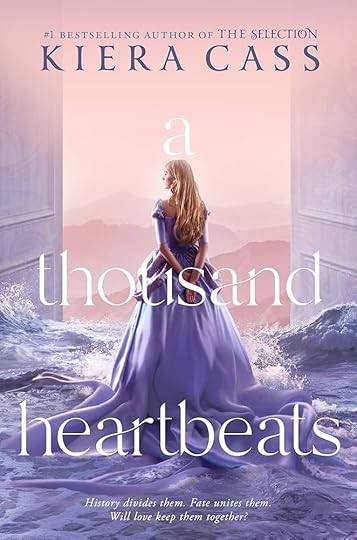
A Thousand Heartbeats has been tugging at my attention since I saw its cover and read the blurb. The model’s purple dress caught eye first—purple is my favorite color, particularly that shade. I saw the book at a thrift store, was teetering on whether to betray my TBR and read it. I finally caved and got it on Kindle Unlimited, eager to revisit my late teens and become lost in a happily-ever-after love story. Now I’m determined to get a paper copy.
As a Swiftie, I was not disappointed by the emotions that this story evoked in me. If I recall correctly, The Selection was popular around the time of the release of the Fearless album. (Feel free to correct me if I’m wrong in my dates!)
There’s something about Cass’ writing—I really think it is the “color” she adds to her characters—but the book made me nostalgic. It felt like I was listening to Love Story for the first time, as I was introduced to Annika and Lennox.
These two characters’ POVs form the novel, telling a dynamic story. They are both broken, in desperate need of the sunshine that only comes when the heart is opened. Lennox, in particular, had many reasons for shutting his heart away—so when the scene came when he at last allowed himself to be happy, I nearly teared up. In that scene, he is a broken soul accepting happiness he thinks is undeserved. What a powerful thing to read!
As princess, Annika is determined to do what she must in order to serve her people and maintain a stable kingdom. She has felt alone in the world since her mother’s disappearance, suffering since childhood as she wondered if her mother was alive somewhere, or had been killed. Her father has his demons, and is not who he used to be. Only her brother and her ladies’-maid, Noemi, are worthy of her trust. In all, hers is a lonesome existence, and it’s bound to become lonelier when she agrees to marry a man she does not love, a man who is boring as cardboard, and one who tries to tell her how to wear her hair. How dare he!
Annika and Lennox are complex and endearing, flaws and all. I was satisfied with the ending. I’d spent an entire day glued to my kindle, waiting for the moments that make love stories worth it. This is a profound yet light love story, a quick read, a suitable escape.
I am glad I returned to the world of Kiera Cass, and look forward to more books by this nostalgic author!
August 29, 2024
A Witchy Sort of Reading List
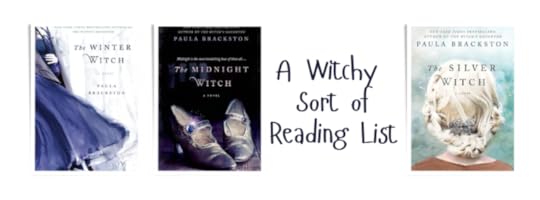
As I type this, my feet are feeling the chill from a draft creeping in from the outside. Our days are warm and sunny; nights and early mornings bring chill, nature’s routine promise of rest for the earth and all creatures that live on it.
I’ve always been quick to admit that autumn is my favorite season, with the laid-back atmosphere and the spooky stories that crop up due to Halloween, autumn’s grand finale. We are entering pre-autumn, so I’m looking to build a season-appropriate reading list that will allow me to immerse myself in the season, the way small creatures immerse themselves in piles of fallen leaves.
This year I began toying with the idea of writing a story about a wood witch—and I did. The very first draft is available on Vella, and it is called The Looking-Glass. It’s unfinished as a Vella, but the first draft of the novel was completed at over 100k and I hope to share it soon.
As a novel and series, this story will be different. It will have longer chapters, and several characters will be tidied or cleared out—but I digress.
In order to write about a wood witch, I sought to read books about witches who are unafraid of what they are or who are only just discovering it. I will soon make a blog post about the witchy books I’ve already read.
Recently, I discovered that this series exists; I was drawn in by the beautiful cover of the third book. I think I might spend the autumn devouring literature by Paula Brackston (as well as other witchy/spooky books, as I find them; do share your suggestions!)
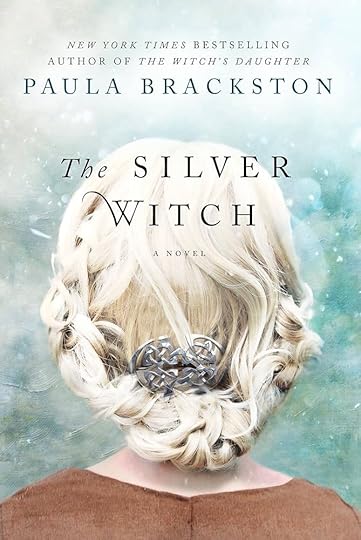
How could I not have become hooked by a cover as beautiful as this?
Have you read this book? Do you have any recommendations for my autumn/spooky reading list?
Please comment with your suggestions, and tell me your plans for the crisper weather!
August 24, 2024
Review: The Ballad of Perilous Graves
I believe that every reader has fallen victim to the trap of buying a book for its pretty cover and discovering that the story wasn’t as good as they’d hoped. It’s happened to me countless times, and while some of those novels turned out to be pleasant reads, they failed to meet my expectations, leaving an aftertaste of disappointment.
Fortunately, this was not the case with The Ballad of Perilous Graves. I was endless-scrolling on social media—don’t judge me; don’t we all?—and the cover for this fantasy novel caused me to stop. Who wouldn’t stop scrolling at such a rich red backdrop? As a pianist and someone who’s dabbling in teaching myself guitar, the piano keys also caused me to go oooh. The skull illustration made me go aaah.
And so, as soon as I had the opportunity to read it, I did. I’ve just finished twenty minutes ago, and I scrambled to write a review while the magic is fresh in my imagination.
This book is long, so I have been carrying my Kindle around with me for a little over a week. Set in New Orleans, The Ballad of Perilous Graves is a love letter to that noble city. It teases from the historical woodwork elements of magic so convincing that one could believe Nola is actually like that. It makes wish I could visit sometime and experience the sights and sounds myself. It’s what I consider magical realism at its finest.
In Perilous Graves’ Nola, there is graffiti that floats in midair. Zombies are regarded as fellow citizens, and songs can take the forms of people. In Perilous Graves, there is an alternate New Orleans where stranger things take place. Perilous Graves features one of my new favorite characters, Doctor Professor, a humorous but larger-than-life musician who travels sitting on his moving piano playing bars of music and belting out lyrics of jazz and the blues.

The Ballad of Perilous Graves is rich with inclusivity. It represents different people and cultures. Most of the characters speak in the dialect of the area, which makes it even more of a treat to read. I didn’t know finna was a word until this book found me, but it was a great pleasure to read.
I enjoy seeing how the English language can transform and take on different shapes, depending on where it is spoken. My favorite characters from Pride and Prejudice speak beautiful English; in the same vein, my new favorite characters in Perilous Graves also speak beautiful English. How I love the English language and the way that it comes alive!
I would venture to compare Perilous Graves to Jonathan Strange and Mr Norrell in the sense that an alternate version of an existing world is created, where unusual things aren’t all that unusual. The world-building in both of these novels is fantastic, and it was worth the long read. I can’t wait to revisit Alex Jennings’ New Orleans again in a few years, when enough time has passed that the book is new to my older mind and the characters are glad to see me again.
I know I will spend the rest of my life looking for more novels that captivate me in the way that Perilous Graves and Jonathan Strange did. You could add all of the books I’ve read by H.G. Parry to this list—A Declaration of the Rights of Magicians and The Magician’s Daughter (click both links to find my reviews for these novels). It brings me great joy to add Jennings’ work to my shelf of all-time favorites, and I am in love with the written word; I know more such books will crop up to join them.
Do you have any suggestions for me to read next? Have you read a book that might fit nicely in this magical family? Please comment with your advice; help me escape once more to a world like Jennings’ New Orleans or Susanna Clarke’s London!
August 23, 2024
Trying New Things
If I have learned anything worth sharing this summer, it would be this: it is never too late to pursue a dream.
I’ve had a fascination with ukuleles for a while now. I love how they make playing music accessible and fun for people who do not have the time or attention spans to learn more complex instruments.
However, I have always had a longing to pick up a guitar and “tinker” with it, creating a more complete sound.
My favorite kind of music has always been indie/acoustic, with elaborate songwriting wrought with emotion. I’ve had two guitars sitting in my room for years now, but they were so intimidating to me! Six strings, when I only have five fingers on each hand! With no training in the realm of stringed instruments, it baffled me that anyone could coax a melody from one. They must be working enchantments.
Then, this summer, quite out of the blue, I made a choice.
I am now 30. I have a basic knowledge of music theory because of the piano lessons that Grandma gave me. I am finally up for the challenge of picking up a guitar and using it to create something. The Internet has a wealth of information, and I have found second-hand lesson books.
I am going to teach myself to play the guitar, for my own enjoyment. I do not plan to join a band (though with a God like ours, it’s always dangerous to talk about ‘our plans’). I started with Taylor Swift because I am most familiar with her lyrics (I’ve already learned the intro to White Horse), but I plan to try music by other artists. I especially want to learn some classical pieces.
Music is my second favorite escape (books and writing being the primary). I can play the piano, but those are not portable. I’d love to be able to take my guitar or uke out to the yard, sit on the grass, and compose something for the sheer fun of it. Maybe I’ll share a bit of my progress. I have considered making a separate Instagram to document my journey so that you can follow along.
We need not limit ourselves to one form of art, when there are so many different ways for humans to express themselves. I don’t reckon I shall ever be adept at the visual arts, such as drawing or painting. Writing and music, however, sit comfortably in that space of my soul.
How much can I learn in a year of self-taught guitar study? Will I be fantastic at it in a decade? We can only wait and see.
My goal is to learn five songs this year from beginning to end. This might include singing along! Since I’ve already learned the intro to White Horse, that’s become the first of those five songs. When I decide which songs the remaining four will be, I will be sure to post about them here.
Have you tried anything new this summer? Have you ever taught yourself something from scratch?
August 18, 2024
Review: A Declaration of the Rights of Magicians by H.G. Parry
I discovered author H.G. Parry earlier this year with the fantastic novel The Magician’s Daughter, of which I wrote a review that you can find here. Parry has become my new standard for what it takes to make what I consider to be ‘a favorite novel’; using beautiful prose and imagery, this author manages to weave what I consider to be masterpieces that almost lead me to believe magic might be real.
The Magician’s Daughter is the touching story of a wizard and his adopted daughter as they navigate a perilous situation together, learning that some people can be trusted and others can not. I was enthralled by the relationship between Bridget and her father, not to mention their magical familiar who is a talking rabbit. The setting in that novel, as well as a specific, beautiful flashback that reminds us that many times, family is chosen, made me into a devoted follower.
When I purchased A Declaration of the Rights of Magicians, I was first delighted by the length of the book. Like many other readers, I have an obsession with stories that are long and sweeping, though I acknowledge that there are some short, poignant gems which can take one’s breath away. That said, I grabbed the book for its length first, and then saw the name of the author. I wouldn’t say it was an impulse-buy, but I didn’t think much more about my choice as I took it to the register.
Echoes of Dickens shimmer between the lines of this epic tale set during the time of the French Revolution. Maximilien Robespierre is introduced to us as, not only a talented speaker, but a man who had a special gift which contributed to his ability to draw large crowds and win their support for his cause.
The question is, in this book, what is his cause?
He longs for a France where all magicians, regardless of social class, are free to practice magic if they are born with such a gift (in an amusing twist, the King of France in this novel was not born with magic, but Marie Antoinette was). That freedom is what Maximilien fought for; we eventually learn that he had a ‘benefactor’ who turned his good vision into a horrific persecution, laden with bloodshed and betrayal.
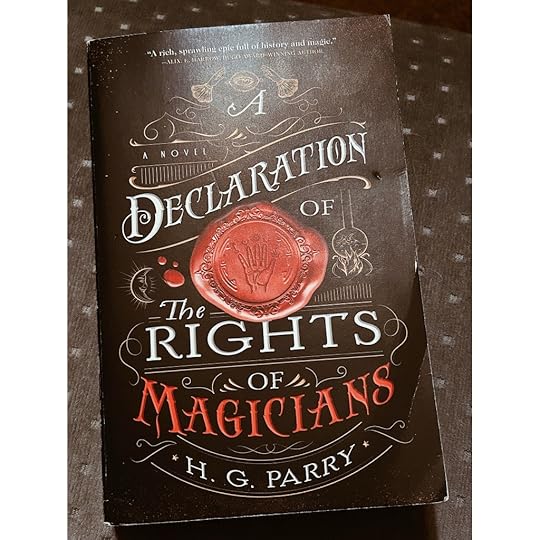
The existence of this book proves that the French Revolution will forever capture the imaginations of those who learn about it. Enough time has passed since those dark events that we can embellish them. H.G. Parry turned an awful season of French history into the deeply moving story following a man who wanted to make a difference for people like him…and who paid the ultimate price for it.
Robespierre is portrayed as sensitive, brave, and a little naive. By the end of this book, I cared deeply for his character. He will live in my memory as a favorite character, much like Biddy’s father in The Magician’s Daughter.
A Declaration is told from the viewpoints of multiple characters, including Robespierre. We also see these events through the eyes of British Prime Minister William Pitt, who has a secret of his own, and Fina, a slave girl who escaped from a Jamaican plantation with a heart steeled to make a difference and free her people. These viewpoints allow us to explore the turmoil from many angles, taking sides and feeling horror that human beings could be capable of such evil at any time in history.
That’s the thing, though—in A Declaration, it is not only human error that causes so much bloodshed. Someone is arranging it, deep in the shadows, someone who has been alive for a long time.
I’ve seen other readers complain that, compared to the heartwarming Magician’s Daughter, A Declaration is too dark for their tastes. I can see why a person would say that; though I will not spoil it, there are elements that made me close the book at times to catch my breath.
Yes, there is darkness in this novel, but that does not make it any less of a masterpiece; in my opinion, it makes it even more so, because you cannot perceive light if you don’t have darkness to compare it with.
Again I must say that H.G. Parry’s work has raised the bar for me with fantasy fiction and long novels. It has also made me more critical of the stories that I tell. I can only hope to one day manage a tale so enthralling as these, and I can’t wait to get my hands on a copy of the sequel, A Radical Act of Free Magic. I will escape once more into the deep, often gruesome, but hopeful world that is described in these pages.
I will be waiting eagerly for more work from H.G. Parry.



